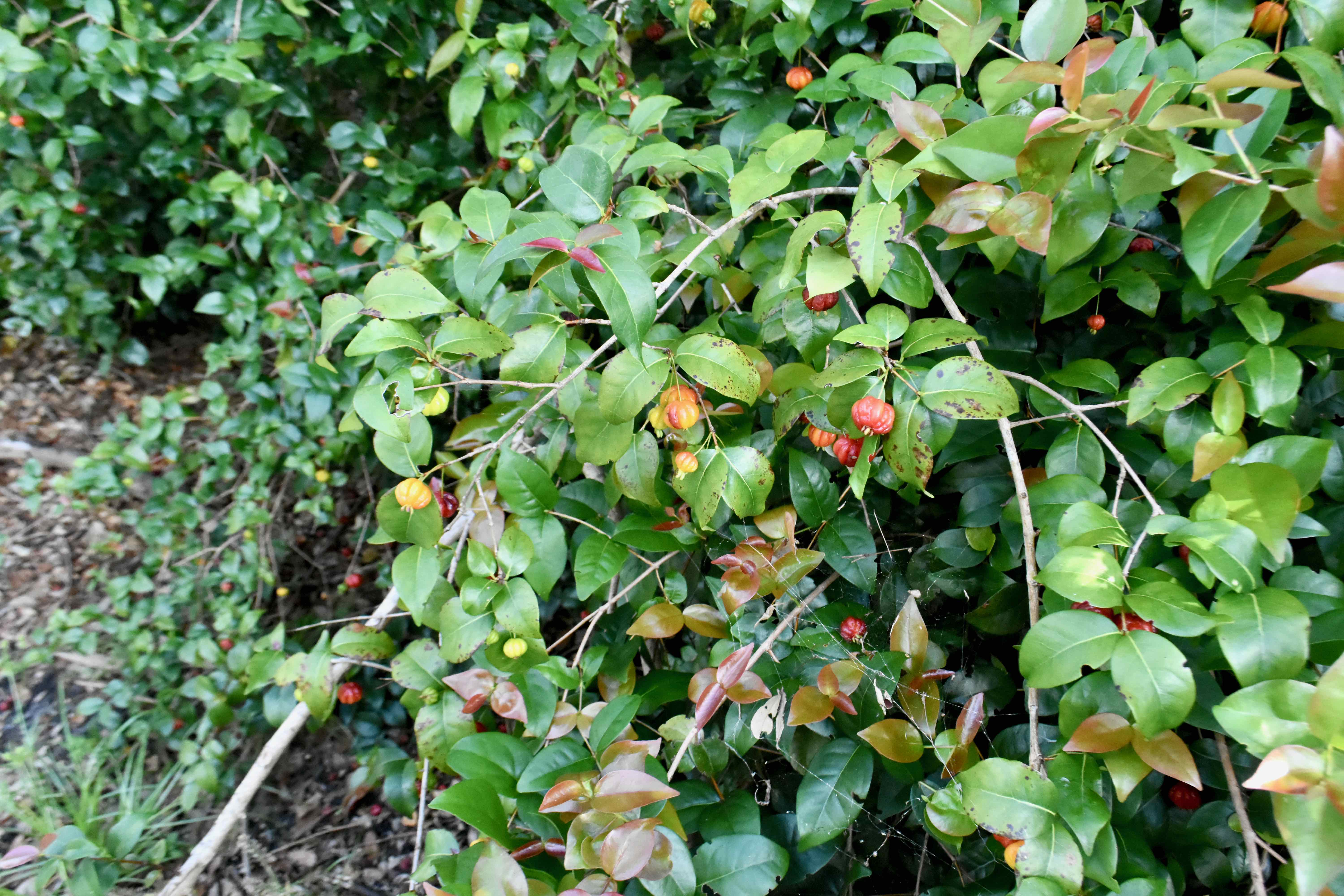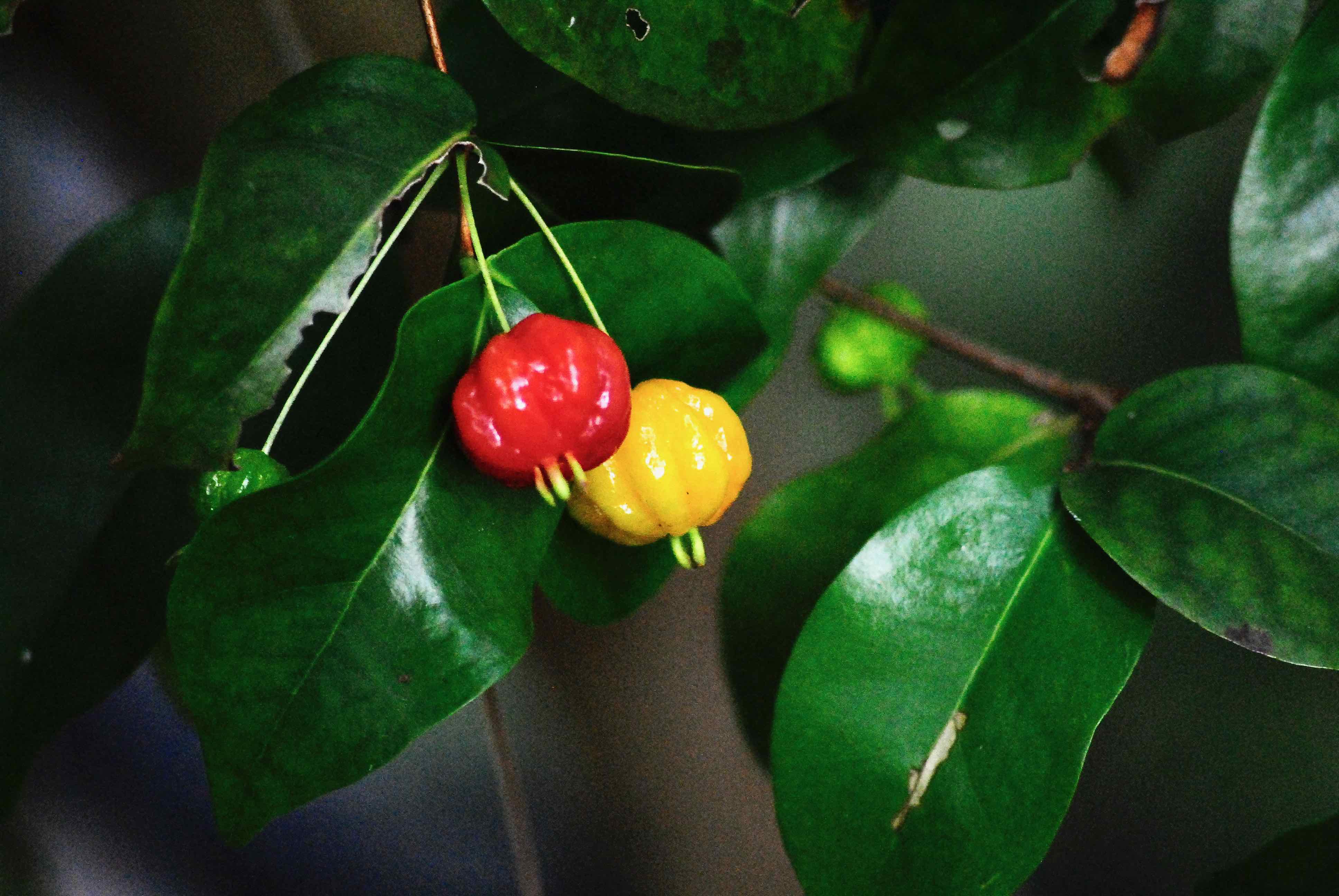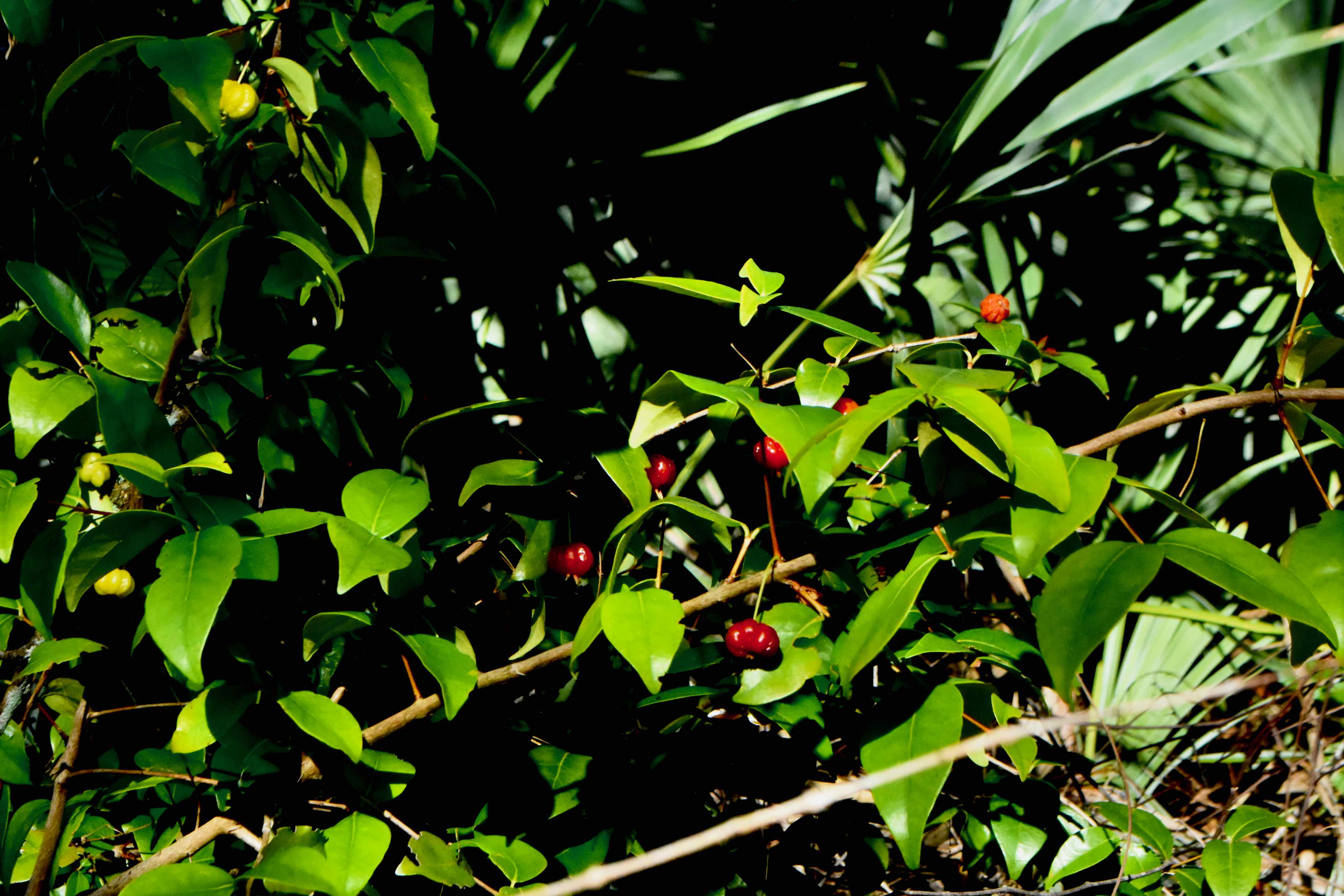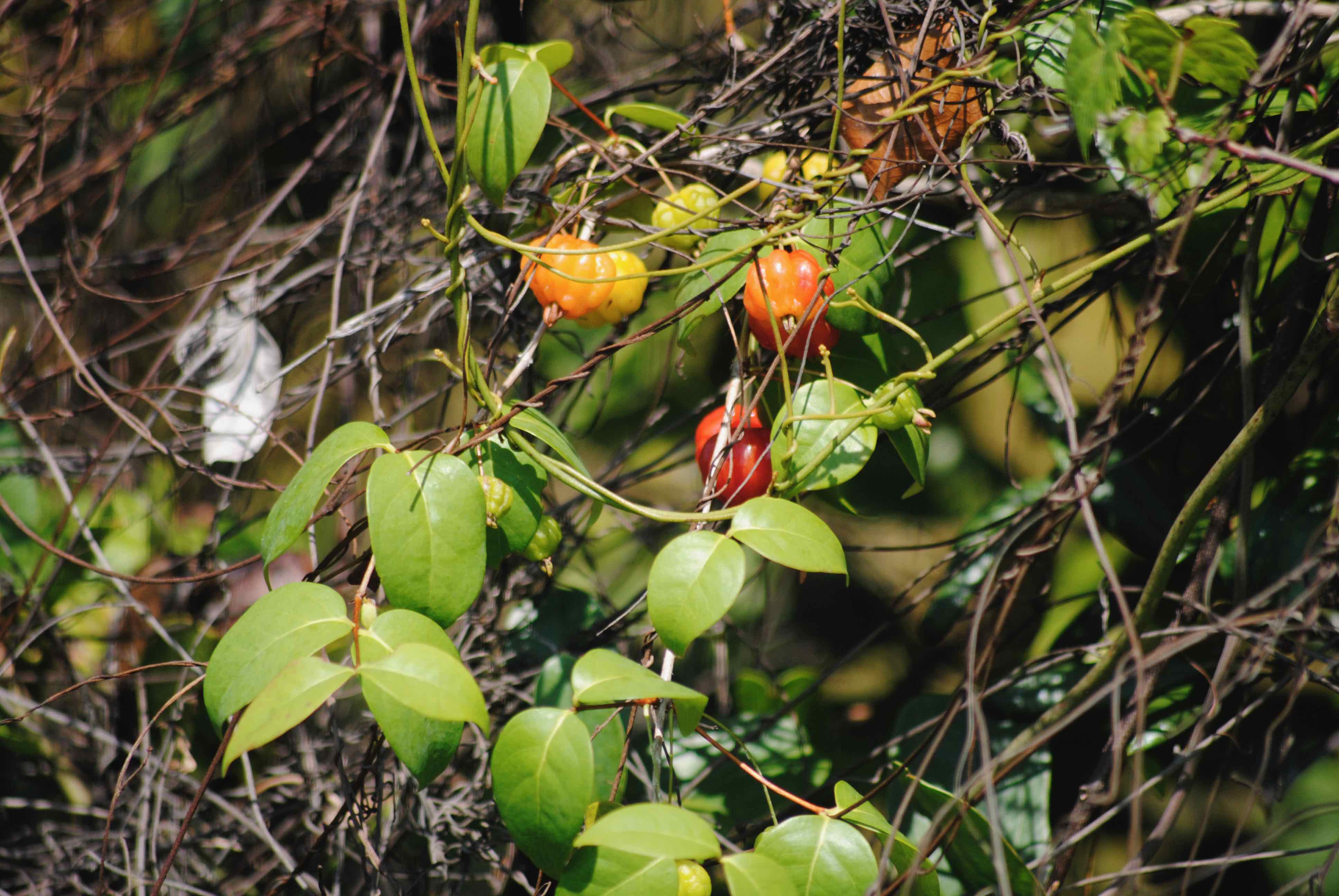
Surinam cherry, photographed at Blazing Star Preserve, Boca Raton, Palm Beach County, in May 2019.
Surinam cherry, Eugenia uniflora, is a bit of a misnomer. It actually hails from a fairly large swath of South America in addition to the former Dutch colony, and it's definitely not part of the cherry family.
It came to Florida sometime before 1931, brought here as an ornamental and for the fleshy fruit it produces. It "escaped" cultivation, and became naturalized throughout Central and South Florida. It's only found in Florida and Hawaii among the 50 states; its range in Florida extends roughly from Brevard, Polk and Pinellas southward into the Keys.
It's done well here, too well, particularly in the southern end of the Peninsula. The Florida Exotic Plant Pest Council declared Surinam cherry to be a category II invasive in 1991, meaning it had the potential to damage ecosystems within Florida but had yet to do so. In 1995, it was upgraded to category I, meaning it was a full on invasive menace.
We've seen it mostly as a shrub in habit, but it can reach as tall as a tree-like 30 feet. It's used commonly as a hedge, because of its attractive foliage, moderately fast growth rate and because it is relatively easy to trim. In fact, the University of Florida extension service once promoted its use. Not so much now. The extension service is not only encouraging property owners in South Florida not to plant it, but is asking those who already have it to dig it up and replace it with something more Florida friendly. The sale of Surinam cherry however, remains legal. It produces fragrant white flowers in the spring and early summer, followed by ribbed, orange-red fruit that make Surinam cherry easy to identify. The leaves and stems have a red tinge to them when young and add to the plant's good looks. The leaves are arranged opposite each other along the stem, are oblong and come to a sharp point at the tip. The leaves turn dark green as they mature.
Surinam cherry is not terribly tolerant of cold; younger plants can be serverely damaged or killed, but mature shrubs will sustain only superficial damage at temperatures as low as 22 degrees.
The fruit is fairly large, about an inch to an inch and a half across and noticeably ribbed. It turns from green to yellow to red to nearly black as it ripens. It gets mixed reviews as far as taste. Some give it two thumbs up, while others give it a full-throated meh. For one thing, it doesn't taste anything like a cherry, and it has a bit of a resinous or pine quality to it (as do the leaves and other parts of the plant). Chilling the fruit for a few hours will reduce the off taste, according to Purdue University. Experts, including our favorite Florida forager, says the key is picking the fruit when its absolute ripest, a deep, nearly black blood-red and nearly falling of the stem. It can be eaten out of hand, used like strawberries or cherries in desserts, or made into jelly or jam. In Brazil, it's used to make wine and vinegar. Surinam cherry is highly nutritious.
Its native range includes Surinam, Guyana, French Guiana, Brazil into Uraguay and Paraguay. The Portuguese, once colonial masters of Brazil, helped spread the plant throughout warmer parts of the world, from southern Europe to Africa to parts of Southeast Asia, including the Philippines. The first specimen of Surinam cherry to be described botantically was found growing in a garden in Pisa, Italy, believed to have arrived there via the Portuguese outpost of Goa, India. It's been introduced to parts of South America beyond its native range, into the Caribbean, Central America, India, the Pacific islands, into Africa and around the Mediterranean, including Israel. Its introduction didn't always come off quite as hoped. In places, it was brought in as a potential cash crop but never quite produced enough to be commercially viable. In other places, it attracted pests, including the Mediterranean fruit fly or, like Florida and Hawaii, adapted too well and became an invasive.
Within its native range, Surinam cherry is used in a variety of ways beyond the kitchen. The leaves are scattered on the floors of homes; when tread upon, they release oils that repeal flies. The leaves are used medicinally to stop bleeding, relieve stomach aches, break feavers and treat colds.
Other names for Surinam cherry include Brazil cherry, Brazilian cherry, Cayenne cherry, pitanga and Florida cherry. It is a member of Myrtaceae, the family of myrtles.
Click on photo for larger image
Links for Surinam Cherry



